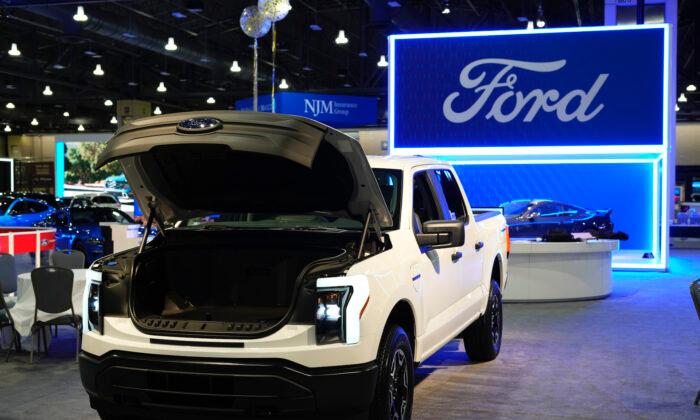Ford’s F-150 Lightning, the battery-powered version of the most beloved pickup truck on the American market, suffers from the same problem all electric vehicles (EVs) do—it loses a significant amount of range when it’s hauling heavy cargo.
Every truck, regardless of its power source, loses range with more weight added to its bed. This trade-off usually isn’t much of a concern to owners of traditional gas-powered trucks since it’s relatively easy to find gas, and a gas tank is quick to refill.
However, for owners of F-150 Lightning and electric pickups alike, the range loss could pose a logistical challenge to their hauling plans.
The testers first drove an empty F-150 Lightning around a 7.5-mile oval test track to establish an unloaded baseline. They then loaded the truck with 1,400 pounds of sandbags—100 pounds less than its maximum capacity—and drove the pickup around the same track.
According to the results, the truck went 278 miles when empty. With a 1,400-pound load in the bed, the truck finished at 210 miles, representing a 24.5 percent range loss.
With that said, the AAA is not expecting Ford Lightning’s payload-related efficiency losses to scare many prospective buyers away since most owners use their pickups for regular commuting rather than heavy-load, long-distance hauling.
“Our testing revealed a significant range reduction, but it’s important to note that the Lightning was loaded to near its maximum capacity,” Greg Brannon, director of AAA’s automotive engineering unit, said in a press release. “Most buyers will likely use their Lightning with a lighter load, resulting in a much smaller range reduction.”
In the meantime, the AAA recommends that buyers consider what type of driving they will be doing and choose the vehicle that best fits their needs.
“The difference, for now, is that it is easier to gas and go than stop and charge,” the organization said, noting that EVs are more suitable for the urban environment.
“Highway driving, which typically involves higher speeds and less regenerative braking, will further reduce range,” it explained. “Unlike gas-powered vehicles, which perform more efficiently at highway speeds, EVs thrive in urban driving conditions due to regenerative braking from more frequent stops.”
In addition, the test results are probably more important for those who plan to fit theirs with permanent loads like built-in toolboxes and racks.
“In the case of battery electric pickups used as work vehicles, permanent loads (such as equipment racks, toolboxes, and equipment trays built into the vehicle) will reduce the range at all times, even without additional cargo,” the AAA said.
Specifically, Ford wants to ramp up F-150 Lightning’s annual run rate to 150,000 units, or triple the current run rate, by the end of 2023. It has also hiked Lightning’s price several times since 2021, when it was originally marketed as a sub-$40,000 EV. The price now stands at around $60,000.





